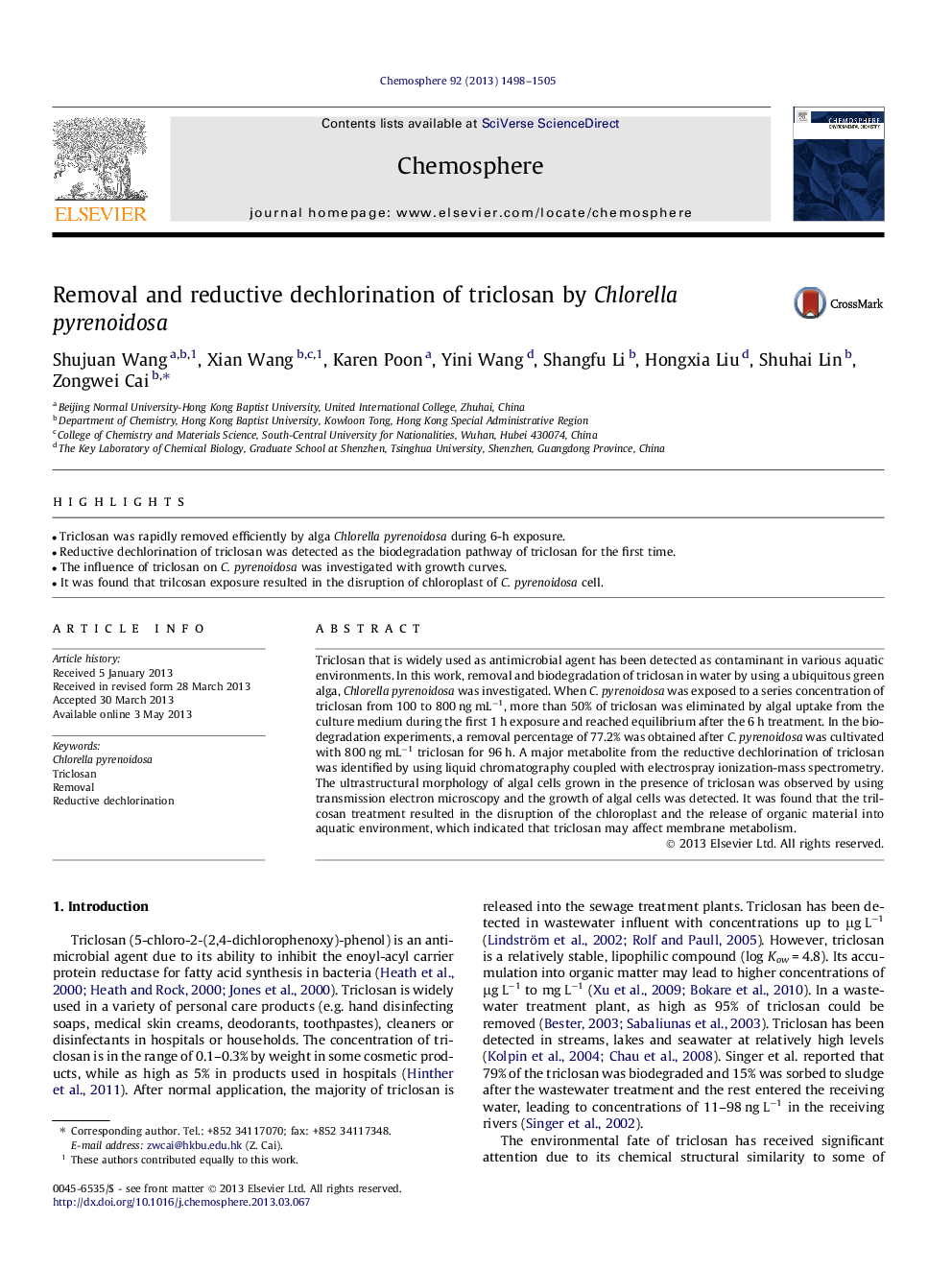| Article ID | Journal | Published Year | Pages | File Type |
|---|---|---|---|---|
| 6310494 | Chemosphere | 2013 | 8 Pages |
Abstract
Triclosan that is widely used as antimicrobial agent has been detected as contaminant in various aquatic environments. In this work, removal and biodegradation of triclosan in water by using a ubiquitous green alga, Chlorella pyrenoidosa was investigated. When C. pyrenoidosa was exposed to a series concentration of triclosan from 100 to 800 ng mLâ1, more than 50% of triclosan was eliminated by algal uptake from the culture medium during the first 1 h exposure and reached equilibrium after the 6 h treatment. In the biodegradation experiments, a removal percentage of 77.2% was obtained after C. pyrenoidosa was cultivated with 800 ng mLâ1 triclosan for 96 h. A major metabolite from the reductive dechlorination of triclosan was identified by using liquid chromatography coupled with electrospray ionization-mass spectrometry. The ultrastructural morphology of algal cells grown in the presence of triclosan was observed by using transmission electron microscopy and the growth of algal cells was detected. It was found that the trilcosan treatment resulted in the disruption of the chloroplast and the release of organic material into aquatic environment, which indicated that triclosan may affect membrane metabolism.
Related Topics
Life Sciences
Environmental Science
Environmental Chemistry
Authors
Shujuan Wang, Xian Wang, Karen Poon, Yini Wang, Shangfu Li, Hongxia Liu, Shuhai Lin, Zongwei Cai,
